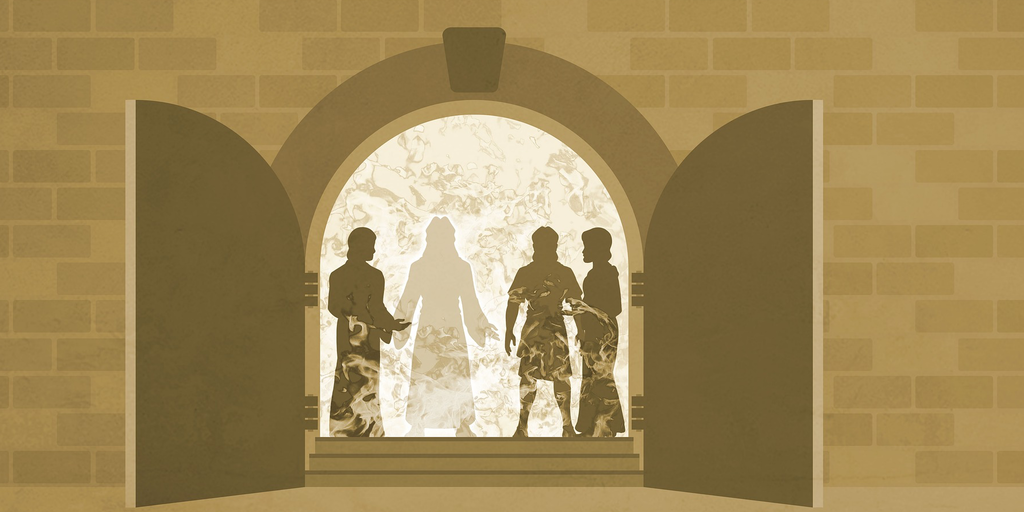The book of Daniel tells the story of three young men named Shadrach, Meshach, and Abednego, who were Jewish captives in Babylon. The story is known for its miraculous outcome and has been interpreted in many different ways throughout history.
The story begins with Nebuchadnezzar, the king of Babylon, building a golden statue and commanding all of his officials to worship it. Shadrach, Meshach, and Abednego, who refused to worship the statue, were threatened with being thrown into a fiery furnace. Despite the danger, they refused to bow down to the statue and were thrown into the furnace.
As the three young men entered the furnace, a miracle occurred. Not only were they unharmed by the flames, but a fourth person was seen within the furnace with them. This person, described as an “angel” or a “son of God” by different interpretations, is believed by many to be a divine presence that protected the young men.
Nebuchadnezzar was amazed by what he saw and declared that the God of Shadrach, Meshach, and Abednego was the one true God. He ordered his officials to worship this God and declared a decree that anyone who spoke against the God of the three young men would be punished.
The names of the three young men are believed to have been changed by their Babylonian captors. Their original Hebrew names were Hananiah, Mishael, and Azariah. The Babylonians likely changed their names to reflect their new identities as captives in Babylon.
Shadrach, Meshach, and Abednego are commonly interpreted as symbolic names. Shadrach is believed to be a Babylonian name meaning “Command of Aku,” which was a Babylonian moon god. Meshach is believed to be a Babylonian name meaning “Who is like Aku,” while Abednego is believed to be a Babylonian name meaning “Servant of Nebo,” which was a Babylonian god of wisdom.
There have been several esoteric interpretations of the story. Some Jewish scholars have interpreted the story as a representation of the Jewish people’s resistance to forced assimilation. The statue that Nebuchadnezzar built represents the Babylonian culture that the Jews were forced to adopt, and the refusal of Shadrach, Meshach, and Abednego to worship the statue represents their commitment to their own cultural and religious traditions.
Christian scholars have often interpreted the story as a representation of the power of faith in God. The three young men’s refusal to worship the statue, even in the face of death, represents their faith in God’s power to protect them.
Some esoteric interpretations suggest that the story is a representation of the alchemical process of purification. The fiery furnace represents the crucible in which base metals are purified, and the three young men represent the alchemical substances that undergo the process of purification.
In conclusion, the story of Shadrach, Meshach, and Abednego is a powerful tale of faith, resilience, and divine intervention. The presence of a fourth person within the furnace and the subsequent declaration by Nebuchadnezzar of the God of the three young men as the one true God highlights the supernatural aspects of the story. Its interpretation varies between religions, and its esoteric meanings offer insight into the historical and cultural influences of the time. The story emphasizes the importance of faith and commitment to one’s beliefs, even in the face of persecution.
Do you have an interpretation or additional details to share? Visit the post on the Fediverse to comment.

